|
Evidence of the Minton family in
Stoke:
Thomas Minton
(1765-1836) founded his factory in 1793/6 in Stoke, The first
products of the Minton factory were blue transfer-printed wares, but
in 1798 bone china (porcelain containing bone ash) was introduced,
with considerable success.
Herbert Minton, (1793–1858),
succeeded his father in 1836 as head of the firm, and to him was due
its development and reputation. He enlisted the services of artists
and skilled artisans.
Herbert
Minton endowed the Church of the Holy Trinity in
Hartshill - built 1842
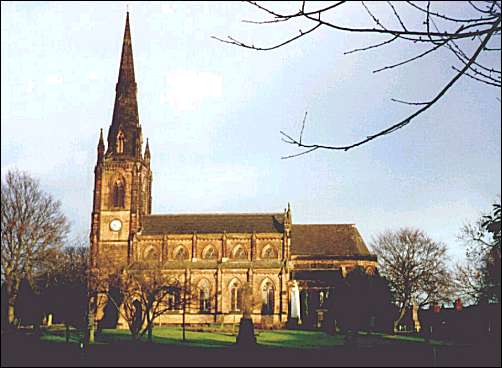
Church of the Holy Trinity
photo c.2000 (supplied: Peter Bennett)
built in 1842 and designed by by George Gilbert Scott and Moffatt.
The church was built in the Gothic style using local quarried stone.

In 1852 Herbert Minton laid out £3,000
for the building of new day schools behind the church. These were
also designed by George Gilbert Scott.
Thomas Webb Minton was
Herbert's brother. Thomas Webb entered the firm with Herbert but
stayed only a few years, since he later took Holy Orders.
Herbert Minton's benefaction at Hartshill was
mirrored by the Rev. Thomas Webb Minton, at whose expense Penkhull
was finally blessed (also in 1842) with a church.
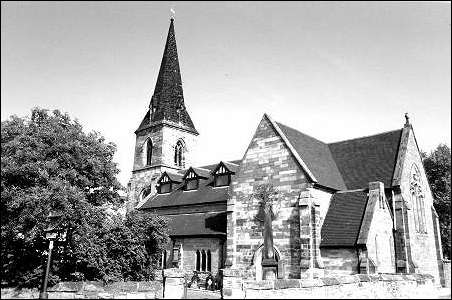
St. Thomas's Church, Penkhull
Minton Memorial Building, London Road: In 1856
it was proposed that public baths should be erected in
Stoke-upon-Trent. A site was acquired on the turnpike road (now
London Road) opposite the Minton factory and a committee appointed
to collect subscriptions. Herbert Minton donated £500 towards the
costs.
After his death in 1858 the project was altered to
accommodate a memorial building as well as a public bath to
commemorate his various philanthropic activities in the town and
district.
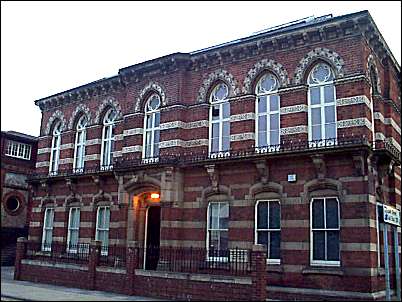
Minton Memorial
Building - London Road, Stoke
Designed by Messrs Pugin and John Murray, architects of London.
The foundation stone was laid by Earl Granville at a public
ceremony on 21 July 1858
|
The building
was completed by February 1860 when a decorative mosaic tablet
was installed above the main entrance:
"The foundation
stone of this building erected by subscription as a memorial
to the late Herbert Minton Esq. of Stoke-on-Trent to
Commemorate his success as a manufacturer and his virtues as a
citizen was laid by the Earl Granville K.G. on Wednesday the
21st day of July in the year of our lord one thousand eight
hundred and fifty eight."
The tablet was
taken down in 1951 in the interests of public safety. |
The School of Art moved into the building from the
old Town Hall at the end of 1859.
Colin Minton Campbell was chairman of the Art School Committee,
Michael Daintry Hollins (Minton's nephew) was treasurer and Sir Oliver Lodge,
secretary. Minton's originally provided both students and an
annual subscription for the support of the School of Art.
A row of cottages on
Hartshill Road initiated by Herbert Minton designed by George
Gilbert Scott, built c.1857-9 under the supervision of Colin Minton
Campbell
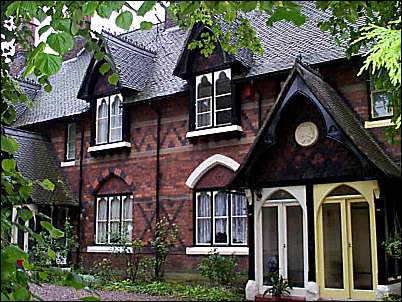
The Minton cottages
on Hartshill Road
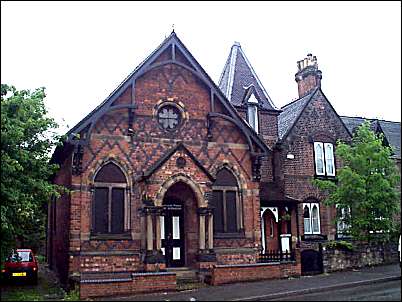
Former Hartshill
Institute; 287 Hartshill Road
the Institute was
occupied by a "Working Mans Association" which provided alcohol-free
entertainment for the residents of Hartshill.

Library
building, London Road:
Purpose built as a
library and Shakespeare Institute in 1878, designed by Charles Lynam
- The site was given by
Colin Minton Campbell (one of Herbert Mintons's nephew), costs subscribed by Thomas William Minton.
Minton
took two nephews into partnership, Michael Daintry Hollins and Colin
Minton Campbell, Hollins in c.1840 and Campbell in c.1848.
From
around 1845 when Hollins joined the company was split in to two
divisions, Hollins managed the tile business and Campbell when he
joined around 1848, the china business.
Tile works office range built in 1869 for
Michael Daintry Hollins of the Minton Hollins Tile Company Ltd.
Designed by Charles Lynam.
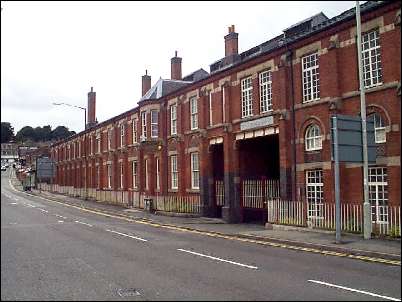
After 1845 the tile business traded
separately from the china business, and in 1869 a purpose-built
factory was established in Shelton Old Road. Most potteries were
built round a courtyard (such as the Spode factory in Stoke), but
this was built on a linear plan, with separate buildings for the
various production processes.
These works were very busy, producing
up to 2 million tiles a month in 1899, many of them Art Nouveau in
style.
Herbert Minton had developed
encaustic (using pigments
mixed with hot wax, which are burned in as an inlay.)
tiles from 1830, working closely with A
W N Pugin, and many of the early tiles will have been used for the
latter's churches and for the Houses of Parliament.
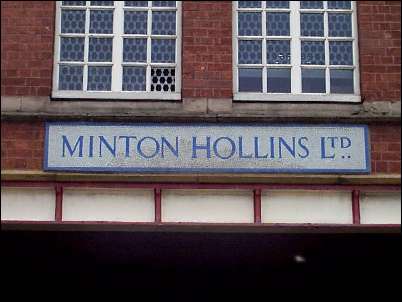
The factory was
largely demolished in 1987 but the main building, facing the street
still survives, it has been restored and is used a the head offices
of a national mobile communications company.
Photos October 1999
Colin Minton Campbell became the MP
for North Staffordshire and three times Lord Mayor of Stoke.
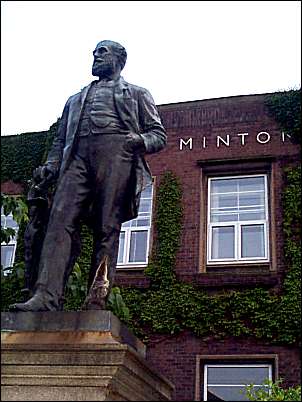
Statue of
Colin Minton Campbell
On
the three sides of the base are the following inscriptions:
'Colin Minton Campbell, born August 27th 1827, died February 8th
1885'.
'A successful manufacturer, a leading townsman and generous
friend'.
'High Sheriff 1869, Member of Parliament for North Staffordshire
1874 to 1887, Thrice Lord Mayor of Stoke 1880-1883.'
The statue was
unveiled by the Duchess of Sutherland at a public ceremony in
January 1887. The statue was originally in Campbell Place but it was
moved in 1954 to a site outside the nearby Minton factory. In 2002
the statue was moved to the new Royal Doulton headquarters site in
Forge Lane, Etruria. The Minton works in Stoke were sold &
demolished late 2002 to make way for a supermarket, after completion
the statue was installed outside the supermarket.
|
![]()
![]()
![]()
![]()
![]()
![]()